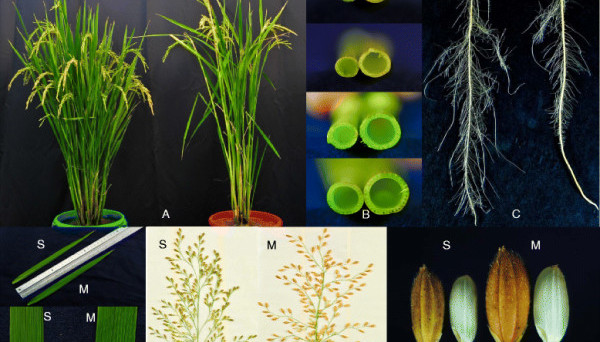
Can you briefly describe what the main aims of your research were?
Rice requires 2-3 times more water compared to other cereals. Recent climate change activities show an increase in the shortage of water for rice cultivation due to low rainfall, delay in arrival of rainfall or long gaps between two rain spells.
Although the availability of water for rice cultivation is decreasing, rice also faces cycles of aerobic (drought) and anaerobic (flooded) conditions, researchers need to develop rice varieties that have adaptations across both conditions, particularly if it is to become more common in the future.
Adaptation of rice varieties across anaerobic and aerobic conditions provides flexibility to rice farmers. This is because they will be able to cultivate rice varieties under flooded situations when enough water is available, but also in dry direct seeded situations – when there is not enough water available early in the season to prepare the land and carry out transplanting.
The main aim of our research was to identify traits and quantitative trait loci’s (QTLs) that provide increased adaptability of rice to variable cultivation environments.
How does this build on previous work?
This research has built on our previous research on drought tolerance. In our long term research on drought at the International Rice Research Institute (IRRI), we found some of the drought tolerant lines, with traits as well as the identified QTLs improving yield under drought, showed effect in both transplanted lowland as well as seeding on dry land.
Why has this been a challenge to achieve?
The study identified a number of traits as well as QTLs that provide adaptation of rice to the variable aerobic-anaerobic situations.
This has been a challenge to achieve as rice has been cultivated for a long time under flooded situations, with 3-5 cm of pond water made available across the crop growth stages. Rice has developed high adaptations to cultivation under flooded conditions.
What are the possible implications of your findings?
The study identified a number of traits as well as QTLs that provide adaptation of rice to the variable aerobic-anaerobic situations. This shall help breeders to develop strains with better adaptation across variable situations to ensure the world’s rice production is stable and sustainable under reduced water, and with the labor available, in the future.
Do you have any plans for future work – what does this involve?
At IRRI, we shall use the identified traits and QTLs in marker assisted breeding to improve the adaptability of high yielding, transplanted rice varieties to variable agro-ecosystems, and we aim to develop better rice varieties for mechanized dry direct seeding.
Comments